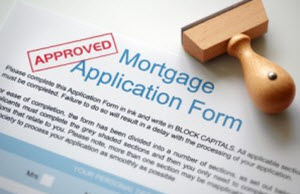When real property (such as real estate) is used as security for a loan, the loan is a mortgage loan. If the borrower defaults on the mortgage loan, the lender has the legal right to take possession of the real property. This is known as repossession or foreclosure.
Financial institutions will typically offer both fixed rate mortgage loans (FRM) and adjustable rate mortgage loans (ARM). The adjustable rate mortgage loan is also known as floating rate mortgage loan or variable rate mortgage loan.

The adjustable rate mortgage loan is the most common type of mortgage loan in many European countries, especially for buying homes. It is uncommon to find ARM loans where the interest rate actually fluctuates continuously; it is much more common with ARM loans where the rate is fixed for a certain amount of time (e.g. three months or one year) and then adjusted when this time period is over. Compare mortgage interest rates at www.boräntor.se.
Fixed mortgage loans are more common in the United States than in Europe. With a fixed mortgage loan, the interest rate is fixed for the entire term of the loan. With an FRM loan, you will typically pay the same amount of money (interest + amortizing) each month until the loan is repaid. There are however other types of FRM loans available as well, such as the FRM loan where you start out by making large payments and then gradually make smaller and smaller payments until the loan is paid in full.
Ceteris paribus, ARM loans usually have a lower interest rate than FRM loans. That is because some of the risk is transferred from the lender to the borrower.
Interest payments only, no amortizing
There are loans where you pay interest only on the loan and never amortize it. With this type of loan, the principal will not go down during the term of the loan since you are paying interest only. When you have reached the end of the loan, you are obliged to pay it back the principal in full.
This type of loan is typically offered for real estate purchases where the lender believes that the real estate will retain its value, or even increase in value, making it possible for the borrower to pay back the loan in full when the real estate is sold.
As a lender, it is important to be aware that for most of these mortgage loans (check the fine print!) you are obliged to pay back the principal in full even if your real estate is sold for less than the size of the principal.
No amortizing AND no interest payments
 Not amortizing your loan while not making any interest payments either might sound like a dream come true, but there is a catch of course. The lender is still charging your interest and you will have to pay all of the interest + the principal when the term of the loan is over. For some loans falling into this category, the lender will add each months interest to the principal, causing your to pay interest on interest (compound interest).
Not amortizing your loan while not making any interest payments either might sound like a dream come true, but there is a catch of course. The lender is still charging your interest and you will have to pay all of the interest + the principal when the term of the loan is over. For some loans falling into this category, the lender will add each months interest to the principal, causing your to pay interest on interest (compound interest).
Loans where you don’t amortize not make monthly interest payments are typically marketed to retired home owners, especially those who have already paid of any initial mortgage loan and has no lien against their property. These real estate owners can get a big lump sum of cash right now that they can use to enhance their quality of life, e.g. by traveling, taking up expensive hobbies, seeing out of town friends and family more often, getting better medical care, getting paid help around the house, or simply being able to add some special comforts to everyday life. It’s not always a question about “living the high life” but rather about being able to maintain the same standard of living as before retirement or being able to handle the increased costs of medicine, home care and so on without actually having to sell their home. In some cases, a couple getting too old and frail to maintain their home on their own will opt for this type of mortgage loan so that they can afford to hire painter, carpenters, roofers, plumbers, etc instead of trying to do everything on their own as before.
When the real estate is sold, the loan must be paid back in full, including both principal and interest. Sometimes the mortgage loan contract will specify that the lender is not allowed to require a sale of the real estate until the borrower (or borrowers) is diseased or has permanently moved away from the property.
It should be noted that some borrowers do not want a lump sum of cash. Instead, they want the lender to deposit money into their account once a month.
Investment-backed mortgage loan
With an investment-backed mortgage loan, the borrower is obliged to make regular contributions to a separate investment plan. The aim of this scheme is to create an asset that will eventually be valuable enough to repay the loan.
This type of loan is typically a loan where the borrower must still make regular interest payments to the lender, but does not need to amortize. With this design, the investment plan must only create an asset large enough to pay off the principal of the loan, since the borrower has made interest payments to the lender during the duration of the mortgage loan.
